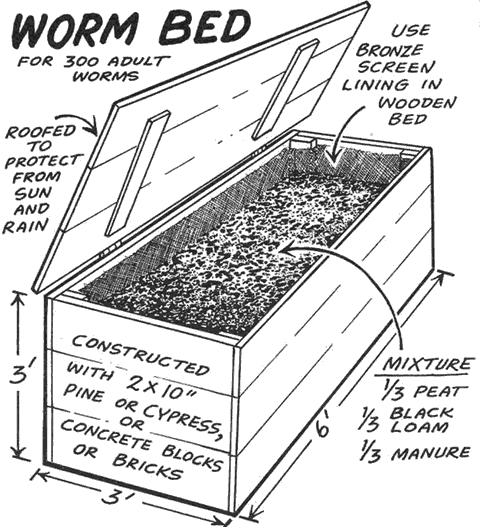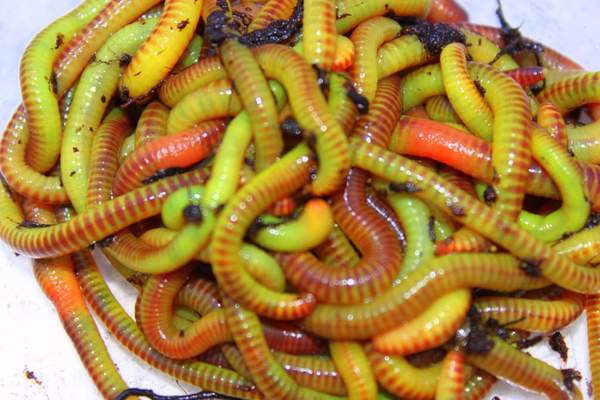4 Easy Facts About Where To Find Red Wigglers Explained
Table of Contents4 Easy Facts About Where To Find Red Wigglers ShownThe Buzz on Where To Find Red Wigglers9 Simple Techniques For Where To Find Red WigglersIndicators on Where To Find Red Wigglers You Should KnowThe Greatest Guide To Where To Find Red WigglersGetting The Where To Find Red Wigglers To Work
For ideal results, you want to strive regarding 60-70% moisture level. The easiest examination for this is to squeeze a handful as hard as you can. At the excellent wetness degrees which is just under 70% that handful need to hardly yield one drop of liquid. pH in a worm bin is pretty simple to preserve.
The Indian Blue is ravenous, but additionally prefers a warmer environment and it likewise exhibits a tendency to escape the container. The red wiggler is a sturdy worm and isn't as choosy concerning its environment. I like to call it the Ford Taurus of vermicomposting worms; you will not boast to your hardcore composting friends that you possess them, yet they will offer you well.
As Tap showed, an angler can do a great offer to make a worm extra enticing.
What Does Where To Find Red Wigglers Mean?
I believe you will certainly also if you attempt them. The smaller sized the trout stream, the far better worms job is an axiom that hasn't altered in the 100-plus years given that Perry wrote his post. Fishermens of his era just stuck their weak fly rods through alder tangles and went down a weighted worm right into a deep hole.
Morning is prime feeding time, and the insubstantial bait's sluggish descent leaves 5 inches of wriggling protein in full sight for a long time. After you have actually made the cast, maintain the bond open and put the pole in a forked stick. The line will certainly diminish the rod in slow-moving loops as the worm resolves, however usually the slow-moving loops will certainly end up being a blur, and the early morning will all of a sudden obtain instead fascinating.
I normally make use of a whole 'crawler, choose marabou dressing, and drop the pole for two or three seconds when I obtain a hit.
If it's there, set the hook with a sweep rather than a jerk. As soon as in a while you'll locate on your own hooked to those slow-moving, hearty yanks, and really feel the weight of a nice walleye.
5 Simple Techniques For Where To Find Red Wigglers
When the hefty walleyes go on to the big-water shoals in the late summer season, attempt going after them with a bucktail jig and a 1-inch pinch of nightcrawler. The bait covers the hook point, deflects weeds, and provides a preference of target. With absolutely nothing dangling or flapping, it continues to be safe and secure no matter of present, casts, or ambitious panfish.
Whether you're wading or angling from a boat, drifting worms is among the excellent searching approaches for bigger rivers. For trout, a spade-dug, 4-inch yard worm is the best size; for bass, walleyes, and steelhead, a nightcrawler may be a much better selection. The secret is to drift the bait with feeding and holding areas because fish in existing are not going to go after down the bait, as they could in next page still water.
Strikes will come as a sharp tug rather than a pull or rap. Fish the changes: mouths of tributaries, bank-side slicks, and the edges of huge pools. As the late Ed Zern, Area & Stream's wonderful satirist, once put it: Fishermens are birthed truthful but they overcome it. His motto uses to any type of number of angling maneuvers, including the issue of including a piece of worm to a wet fly.

Some Known Facts About Where To Find Red Wigglers.
Add a couple of hundred worms and feed them two times a week. Keep the bed linens moist yet not wet. On the menu: lettuce, fruit and veggie waste, and the periodic nongreasy extra.
Similar to veggie scraps, you can take your made use of coffee premises and include them to a worm box. Worms like consuming coffee premises. With the ideal conditions and damp, healthy and balanced dirt, worms can reside in a container of dirt for around three weeks. Shop out of direct sunlight and maintain a temperature in between 50 and 80 degrees.
When the hefty walleyes carry on to the big-water shoals in the late summer, attempt pursuing them with a bucktail jig and a 1-inch pinch of nightcrawler. The bait covers the hook point, disperses weeds, and provides a preference of prey. With absolutely nothing dangling or waving, it continues to be safe no matter of current, casts, or enthusiastic panfish.
The Main Principles Of Where To Find Red Wigglers
Whether you're wading or fishing from a watercraft, drifting worms is one of the fantastic searching techniques for bigger rivers. Where To Find Red Wigglers. For trout, a spade-dug, 4-inch yard worm is the right size; for bass, walleyes, and steelhead, a nightcrawler might be a much better selection. The trick is to wander the bait via feeding and holding locations because fish in present are not mosting likely to chase after down the lure, as they may in still water
Strikes will come as a sharp pull as opposed to a pull or rap. Fish the transitions: mouths of tributaries, bank-side slicks, and the edges of big swimming pools. As the late Ed Zern, Area & Stream's click this site terrific humorist, once placed it: Fishermens are birthed truthful yet they overcome it. His rule puts on any kind of variety of angling maneuvers, including the issue of including a piece of worm to a wet fly.
But elevating your very own bait suggests you can slip out of your house and struck the pond before Mom comes homejust like in the old days. Below's how to maintain a worm box: Cut a sheet of CDX-grade plywood, which is made with waterproof glues, to your measurements. Accomplish with each other and pierce a loads 12-inch openings in the base for drain.
Where To Find Red Wigglers for Dummies
Include a couple of hundred worms and feed them 2 times a week. Maintain the bed linen damp yet not wet. On the food selection: lettuce, fruit and veggie waste, and the periodic nongreasy surplus (Where To Find Red Wigglers).
Similar to veggie scraps, you can take your utilized coffee premises and add them to a worm box. Worms love consuming coffee grounds. With the best conditions and moist, healthy dirt, worms can stay in a bucket of dirt for around 3 weeks. Store out of straight sunshine and maintain at a temperature in between 50 and 80 degrees.